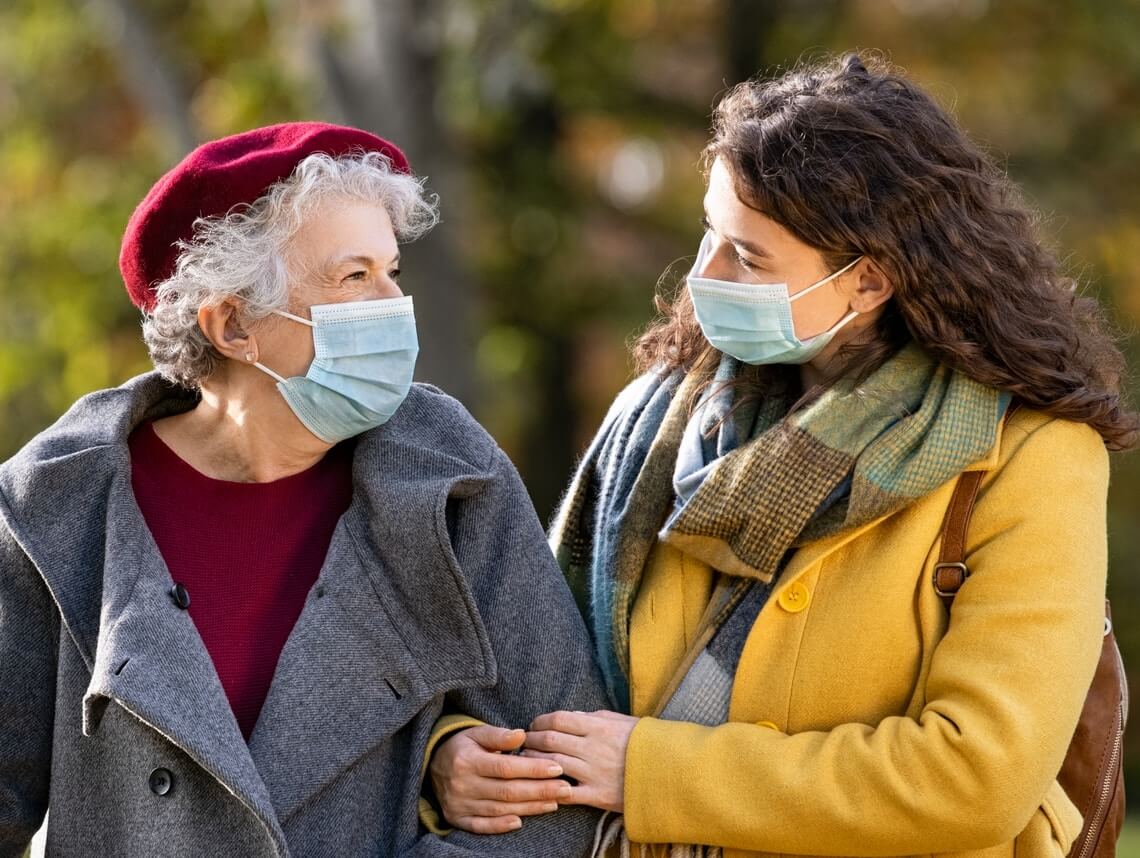The COVID-19 pandemic has turned the world upside down. All across the globe, people have contracted the virus, or gotten used to the constant worry about what types of activities are safe. Then there were initial CDC guidelines that were later amended as new information became available. And masks — which were once a PPE item that could only be bought at specific retailers — are now available even on social media ads. But, are all masks the same? Which ones protect you most against the novel coronavirus?
CDC Guidelines Regarding Masks
The Centers for Disease Control and Prevention (CDC) have been recommending using masks any time you’re at a public setting or gathering with other people. However, it’s important to be mindful of the fact that wearing masks is required by federal law, effective February 2, 2021, in all federal buildings, as well as planes, trains, buses, ferries, and all types of public transportation — including ride-sharing services such as Uber and Lyft. This requirement also extends to all premises of transportation hubs, such as airports, train stations, and bus terminals.
What types of masks protect against COVID-19?
The mask mandate must meet several requirements in order to protect you from coronavirus as well as comply with the CDC order. These include:
- Cloth masks should have two or more layers of solid fabric material
- The fabric should be thick enough that light does not pass through
- The mask should fully cover the mouth and nose
- The mask should fit snugly against the sides of the face
- The mask has to be secured around the ears with ties, loops, or elastic bands
While masks can be either store-bought or homemade, there are certain factors that could increase the risk of infection if the masks are not properly made. These include:
- Wearing scarves or bandanas as masks
- Wearing face shields in lieu of masks
- Lifting your shirt collar over your mouth and nose
- Masks that do not fit properly — such as being too tight or too loose
- Masks made of materials that make it difficult to breathe — such as plastic or leather
If you wear glasses, find a mask that has a nose wire. This will allow you to greatly reduce or prevent fogging. If you have children, purchase smaller masks designed for their little faces. And, always remember to wash your hands before putting on a mask and after removing it.
Masks Required by Sonas Home Health Care
Since the beginning of the COVID-19 pandemic, Sonas Home Healthcare has taken steps to ensure the health and safety of our clients and our caregivers. This includes providing adequate personal protective equipment (PPE) as well as one-on-one training to caregivers when needed, to ensure that everyone is wearing their N-95 masks properly. In addition, we’ve established safety protocols regarding sanitation, screening, and following all CDC guidelines.
Contact Sonas for Home Health Care in Florida
It can be hard to balance your time between work, home, and caring for a loved one. That’s why our team of skilled professionals at Sonas Home Health Care is here to help.
Our home health care services offer support in the comfort of your home. We refer loving and competent nurses to provide customized care for families — from a few hours a day to around-the-clock supervision. Contact us directly to speak with a home health care professional or request a free in-home assessment. Together we can determine the best plan of action to keep your loved ones happy and healthy.
If you or a loved one are considering pediatric or adult home health care services in Florida, contact the caring staff at Sonas Home Health Care. Call today at (888) 592-5855.
This blog was reviewed by Jillian Miller BSN, RN — Director of Nursing for Sonas Home Health Care’s Tampa Bay market — for clinical accuracy. Jillian Miller has been a nurse for 16 years — working primarily in pediatrics. She believes the best part of working with the pediatric population is when you see smiles from clients when you first enter the room. She loves seeing the difference you can make in families’ lives while providing the best care possible for them.

